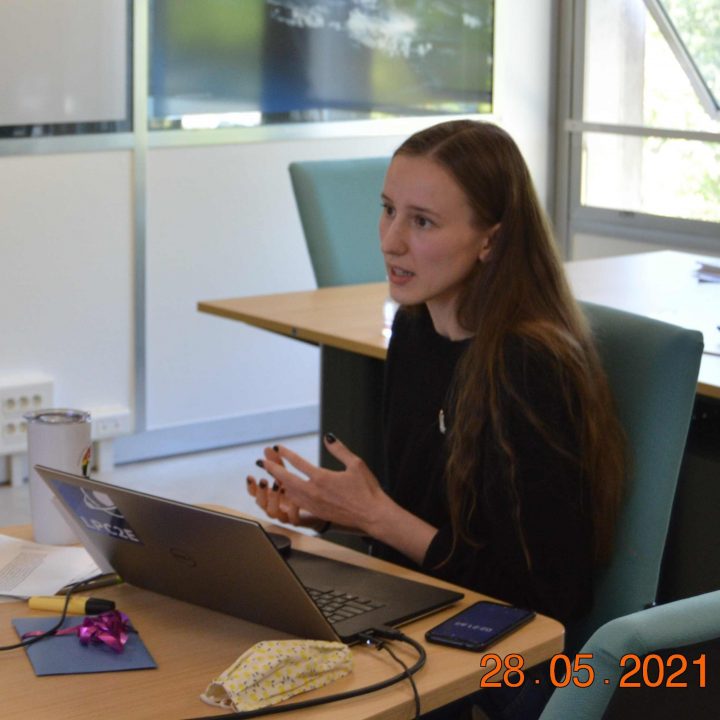Anna’s thesis defense took place via videoconference in front of an international jury composed of Yuriy Voitenko (Royal Belgian Institute for Space Aeronomy), Gaetano Zimbardo (Universita della Calabria), Vladimir Krasnoselskikh (Supervisor, LPC2E), Thierry Dudok de Wit (LPC2E/University of Orléans), Matthieu Kretzschmar (LPC2E/University of Orléans), Milan Maksimovic (LESIA/Paris Observatory), Stuart Bale (University of California).
Abstract:
Type III solar radio bursts are among the most intense radio emissions in the solar system. The production of a such emission is a multi-stage process which includes the generation of the Langmuir waves by the energetic electron beam and further conversion of the Langmuir waves into electromagnetic emission at a fundamental frequency or its harmonic by means of various mechanisms. Random density fluctuations in solar wind plasma are ubiquitous and play an important role in the processes that determine the generation of an electromagnetic emission associated with type III (and type II) solar radio bursts. In the current manuscript we have attempted to summarize various contributions as well as introduce some new results in order to cover the problem of the role of density fluctuations in the formation of type III radio emissions in the most complete manner.
First we start with the theory of beam-plasma interaction, and provide unambiguous arguments that density fluctuations may alter the interaction of the electron beam and plasma waves in such a way that the predictions of the theory come to a good agreement with the observations. We emphasize that the recent probabilistic model of a beam-plasma interaction allows to obtain plausible predictions of the energy density of the Langmuir waves that are typically observed at 1 a.u. by making use of the probability distributions of plasma density fluctuations.
Several mechanisms have been suggested in order to explain the subsequent generation of radio emission at a fundamental frequency. We consider them in detail and show that according to the recent findings the linear mode conversion of the Langmuir wave into electromagnetic wave that occurs during the reflection of the Langmuir wave from density inhomogeneities, may be a dominant process in the framework of the fundamental type III emission.
But the reflections from the density inhomogeneities may be very important for the generation harmonic emission as well, as it requires the presence of the forwards and backwards moving Langmuir waves. We revisit the conventional mechanism of coalescence of a primarily generated and a back-scattered Langmuir waves in a quasihomogeneous plasma and show that the resulting harmonic emissions are significantly more intense than found in previous studies. Additionally, we propose and investigate another mechanism: the nonlinear coupling of incident and reflected Langmuir waves inside localized regions with higher plasma density, in the close vicinity of the reflection point. We use the results of a probabilistic model of beam–plasma interaction and evaluate the efficiency of energy transfer from Langmuir waves to the harmonic electromagnetic emission. The efficiency of Langmuir wave conversion into electromagnetic harmonic emission is inferred to be higher at large heliospheric distances for the mechanism operating in quasihomogeneous plasma and at small heliocentric distances for the one operating in inhomogeneous plasma. The evaluation of emission intensity in a quasihomogeneous plasma may also be applied to type II solar radio bursts. The radiation pattern in both cases is quadrupolar, and we show that emission from density inhomogeneities may efficiently contribute to the visibility of harmonic radio emission, what comes in a good agreement with the observations.
And finally, we analyze the density fluctuations, measured in situ inside the source regions of the type III radio bursts by a Parker Solar Probe spacecraft. We investigate various statistical properties of such density fluctuations.

